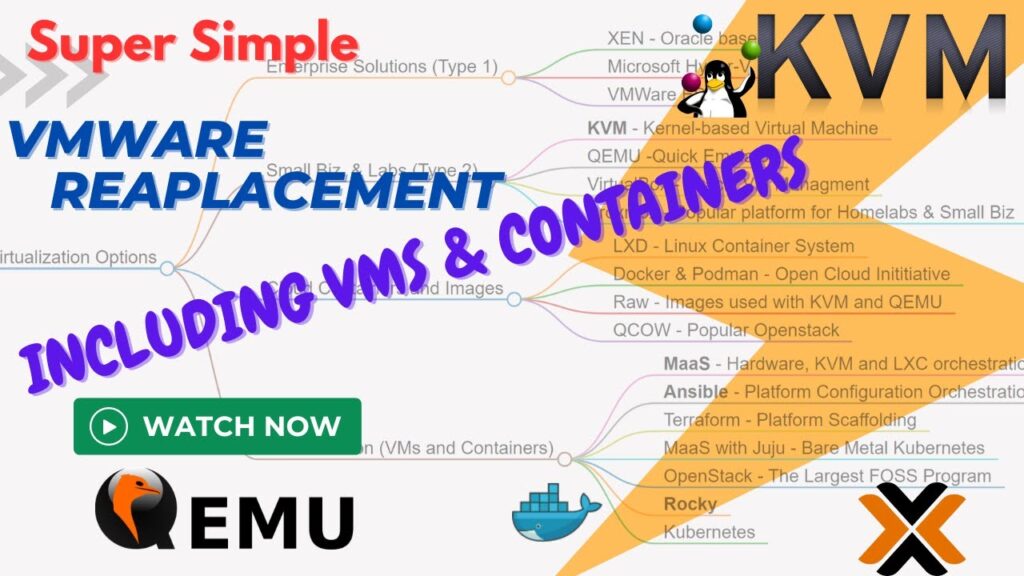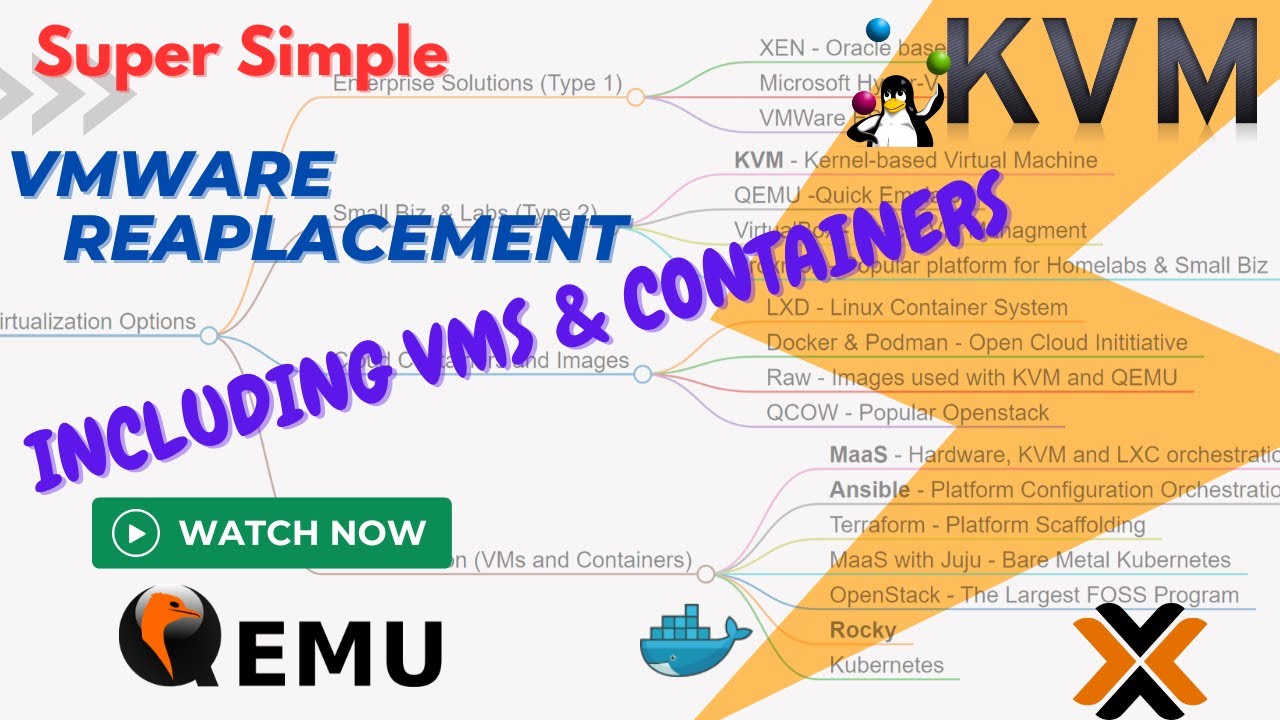In recent times, concerns over VMware’s ownership and rising costs have left many users searching for alternative solutions. I’ve found that Rocky Linux, coupled with the Cockpit package, offers an incredible replacement. With its easy installation process and zero license worries, Rocky Linux provides a seamless transition for managing both KVM virtual machines and Docker containers.
Once you download the ISO and install Rocky Linux, adding the Cockpit package brings you a graphical management interface that’s intuitive and powerful. From handling network configurations using Network Manager to overseeing system metrics, logs, and firewall settings, Rocky Linux ensures a smooth and efficient virtualization experience. Join me as I explore this practical solution that simplifies the complexities of virtual machine and container management.
How to Replace VMware
Introduction
Hey everyone, Wendle from Work From Home Tech here! Recently, I put together a short video discussing how to replace VMware, especially if you’re looking for a quick and simple solution that can handle virtual machines and Docker containers. If you’re tired of navigating the complexities of specialized systems like VMware, then this is definitely for you. This video is timely, particularly considering the recent changes in VMware ownership and pricing. The question of why to replace VMware is becoming more urgent than how to replace it, and I’m here to show you a straightforward alternative. So, let’s explore an option that works great for both edge platforms and small environments with zero license concerns and can be set up in minutes.
Highlight
Let’s dive into the star of our show—Rocky Linux! When I discovered Rocky Linux, it was clear to me that this would be an excellent replacement for VMware. It’s easy to install, and best of all, it eliminates any worries about licensing. Rocky Linux is a community-driven enterprise operating system designed to be 100% bug-for-bug compatible with Red Hat Enterprise Linux. It’s a fabulous alternative that combines ease of use with powerful capabilities. Plus, you won’t need to deal with the complexities and costs associated with VMware.

Installation & Use
Getting Rocky Linux up and running is a breeze. First, you’ll need to download the ISO file from the official website. Once you’ve got that, you can proceed to install Linux on your system. The installation process is straightforward and user-friendly, requiring minimal technical know-how.
Once you’ve installed Linux, the next step is to install the Cockpit package. Cockpit provides a graphical interface that simplifies the management of your system, making it easy to oversee everything from KVM virtual machines to Podman containers. Navigating and managing your setup through Cockpit is a delight, even for those who are new to system administration.
Key Features of Rocky Linux
Rocky Linux is jam-packed with essential features that make it a robust alternative to VMware. One of the standout features is the ability to manage KVM virtual machines and Podman containers (as well as Docker containers if you prefer). You can seamlessly handle virtual machines and containers under one roof.
Networking is also a breeze thanks to Network Manager. You can easily set up and manage networking components without diving deep into configuration files. Network Manager’s graphical and simple user interface provides all the tools you need to manage various system components effectively.

Administrative Features
Cockpit provides a comprehensive overview of system metrics, logs, storage, firewall settings, and networking, making it incredibly easy to administer your system. From the “Overview” tab, you can see system metrics, historical data, and login history.
Storage management tools allow you to keep an eye on disk space, while firewall and networking settings enable you to configure security and network behavior just the way you want. As an administrator, you have the power to create software-defined networking components like bonds, team network interfaces, bridges, and VLANs, all through Cockpit’s user interface.
Additionally, Cockpit allows you to manage public certificates and system configurations, ensuring that your system remains secure and well-tuned.
Container Management
One of Rocky Linux’s strong suits is its ability to manage Podman containers. If you’re coming from a Docker environment, you’ll feel right at home, as Podman offers many features similar to Docker Compose for container orchestration.
Creating and managing containers is simple, whether you need a reverse proxy server like NGINX or more complex setups. Podman integrates seamlessly with Cockpit, providing a hassle-free experience for container orchestration.

Virtual Machine Management
Managing KVM virtual machines with Rocky Linux is straightforward and efficient. You have the option to create custom blueprints that include tailored kernel and file system configurations, making it easy to deploy VMs that suit your specific needs.
The ability to create custom kernels, install specific packages, and define services means you can build VMs precisely tailored to your requirements. Whether it’s a simple setup or something more complex, Rocky Linux has you covered.
Additional Tools
Cockpit comes with a host of additional tools that further enhance its utility. These include built-in applications like an image builder, diagnostics tools, and session recording capabilities.
You also have access to kernel dumps and SE Linux management tools, which are invaluable for diagnosing system issues and ensuring your system’s security policies are adhered to. These tools make Rocky Linux a versatile and comprehensive solution for system management.

Updates and Subscriptions
One of the standout features of Cockpit is its simplified approach to software updates and subscription management. The interface allows you to see available updates at a glance and install them with a single click.
The integrated terminal interface makes it easier to execute commands directly from your browser, adding another layer of convenience for system administration tasks.
Conclusion
In conclusion, Rocky Linux with Cockpit offers a straightforward and powerful solution for managing virtual machines and containers. It’s an excellent replacement for VMware, providing all the necessary tools and features without the licensing hassles. Additionally, enhancements from 45 Drives for storage management using Cockpit further extend its capabilities.
If you found this guide helpful, I encourage you to like, subscribe, and join the Work From Home Tech community. Stay tuned for more tech tips and tutorials designed to make your work-from-home experience seamless and productive!
Thanks for reading, and I’ll see you in the next video!


